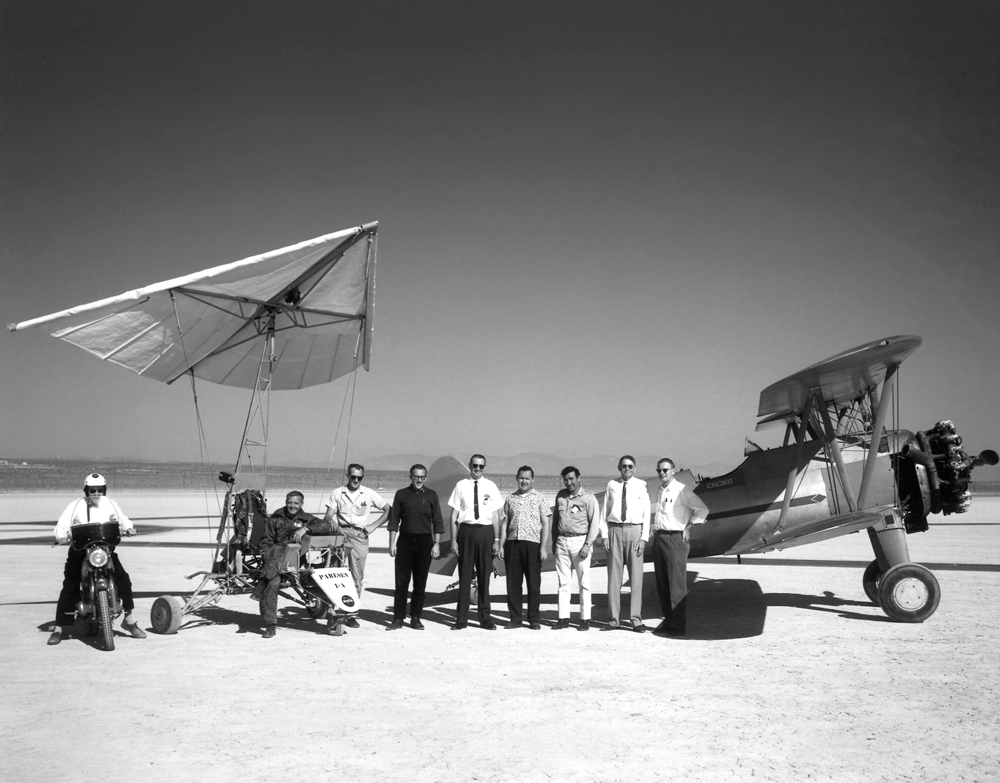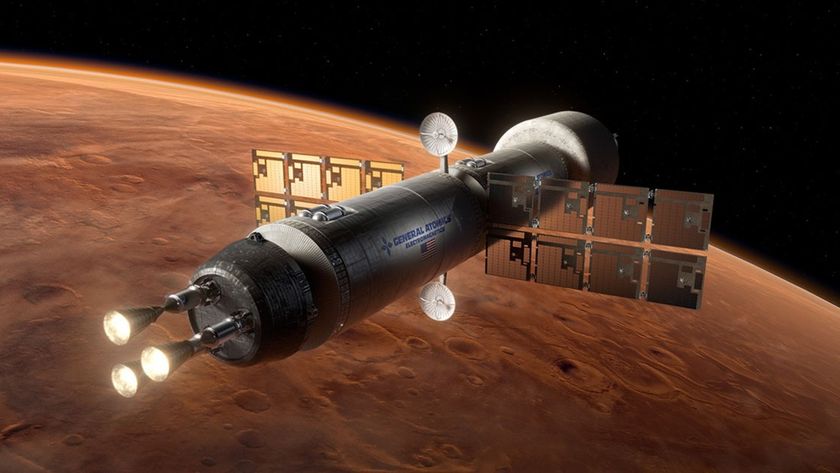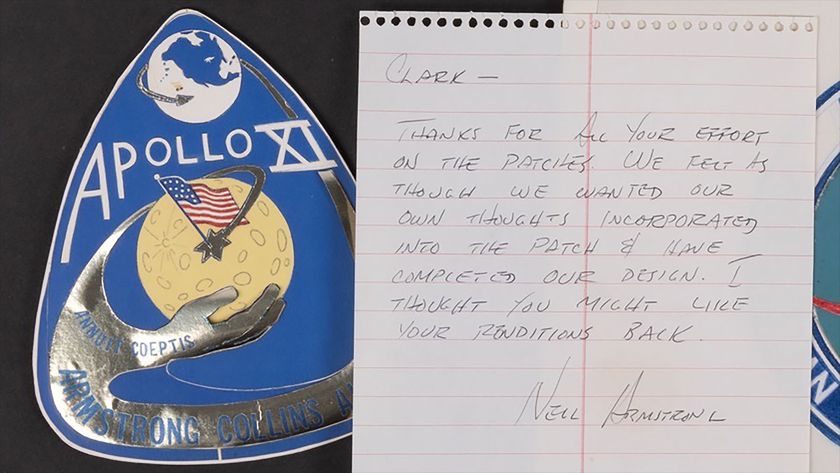Space History Photo: The Birth of Hang Gliding

You probably don’t think of NASA and hang gliding together, but their histories are interwoven. In the early 1960s, during the Mercury space program, NASA studied the feasibility of using a steerable kite-like parawing as a replacement for parachutes used then to safely land spacecraft on Earth. The project was called Paresev, an acronym for Paraglider Research Vehicle.
The unpowered Paresev design was based on the Rogallo wing, conceived in the late 1940s by Francis Rogallo, an aeronautical engineer who worked at the Langley Research Center for the NACA (National Advisory Committee for Aeronautics, a predecessor of NASA). The unpowered, triangular kite had an aluminum frame covered in fabric. The pilot controlled the wing with an overhead stick.
For tests, the Paresev was towed into the air by ground vehicles and aircraft, then cut loose to land on Rogers Dry Lake. The flights lasted minutes at most, sometimes just seconds. It was flown nearly 350 times to test four versions, all between 1962 and 1964.
Ultimately the parawing wasn’t used for the Gemini or Apollo missions — parachutes brought the capsules back to Earth.
But the NASA study helped popularize the Rogallo wing, ultimately popularizing hang gliding.
In the above photo, the Paresev 1-A and a tow plane — a 450-hp Stearman Sport Biplane — serve as a backdrop while the pilot and crew pose for this picture in 1962. Starting at left: On the motorcycle is Walter Whiteside, in the Paresev 1-A is test pilot Milton Thompson, Frank Fedor, Richard Klein, Victor Horton, Tom Kelly, Jr., Fred Harris, owner of the Stearman, John Orahood, and Gary Layton.
Each weekday, SPACE.com looks back at the history of spaceflight through photos (archive).
Get the Space.com Newsletter
Breaking space news, the latest updates on rocket launches, skywatching events and more!
Join our Space Forums to keep talking space on the latest missions, night sky and more! And if you have a news tip, correction or comment, let us know at: community@space.com.

The National Aeronautics and Space Administration (NASA) is the U.S. government agency in charge of the civilian space program as well as aeronautics and aerospace research. Founded in 1958, NASA is a civilian space agency aimed at exploring the universe with space telescopes, satellites, robotic spacecraft, astronauts and more. The space agency has 10 major centers based across the U.S. and launches robotic and crewed missions from the Kennedy Space Center in Cape Canaveral Florida. It's astronaut corps is based at the Johnson Space Center in Houston. To follow NASA's latest mission, follow the space agency on Twitter or any other social channel, of visit: nasa.gov.


